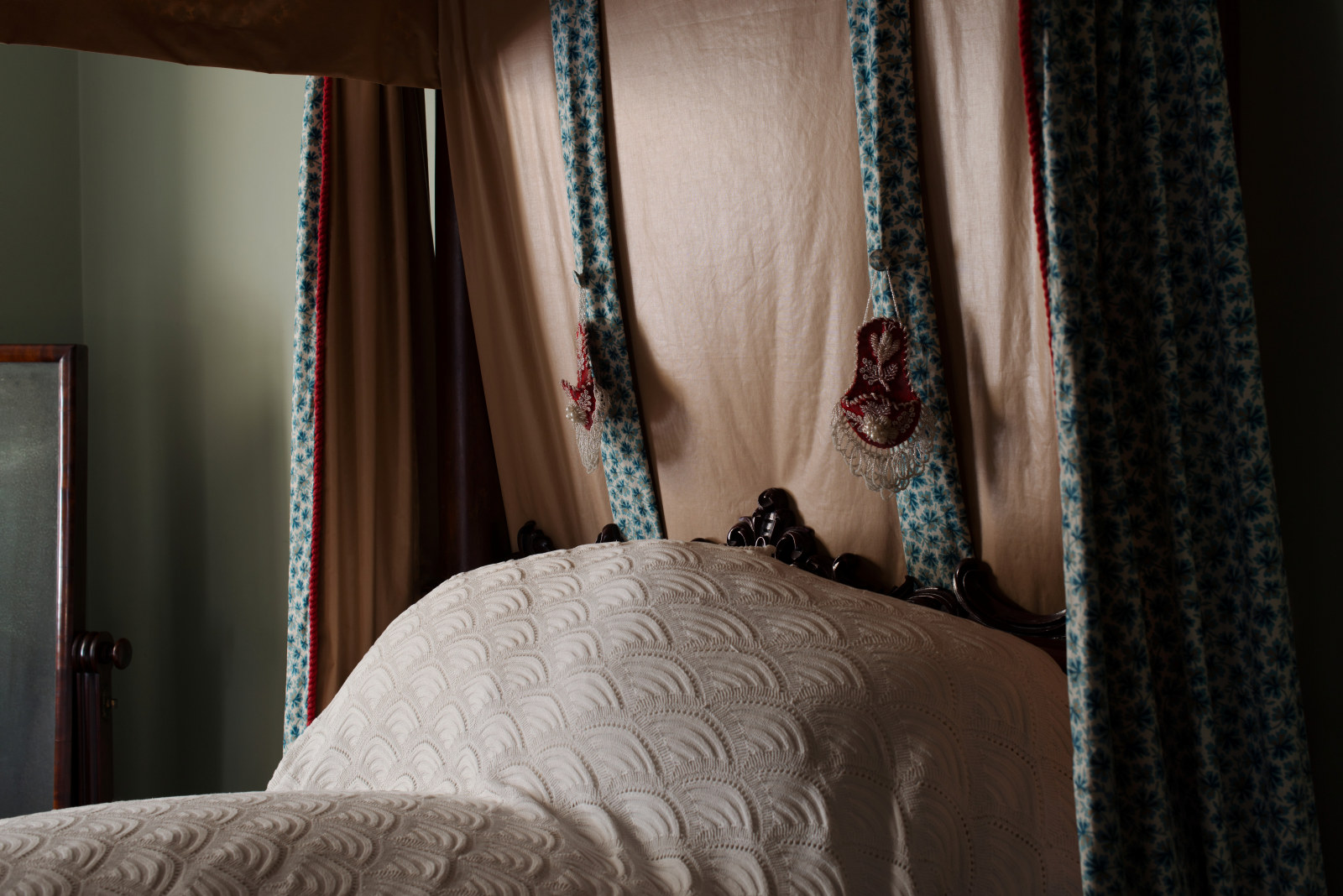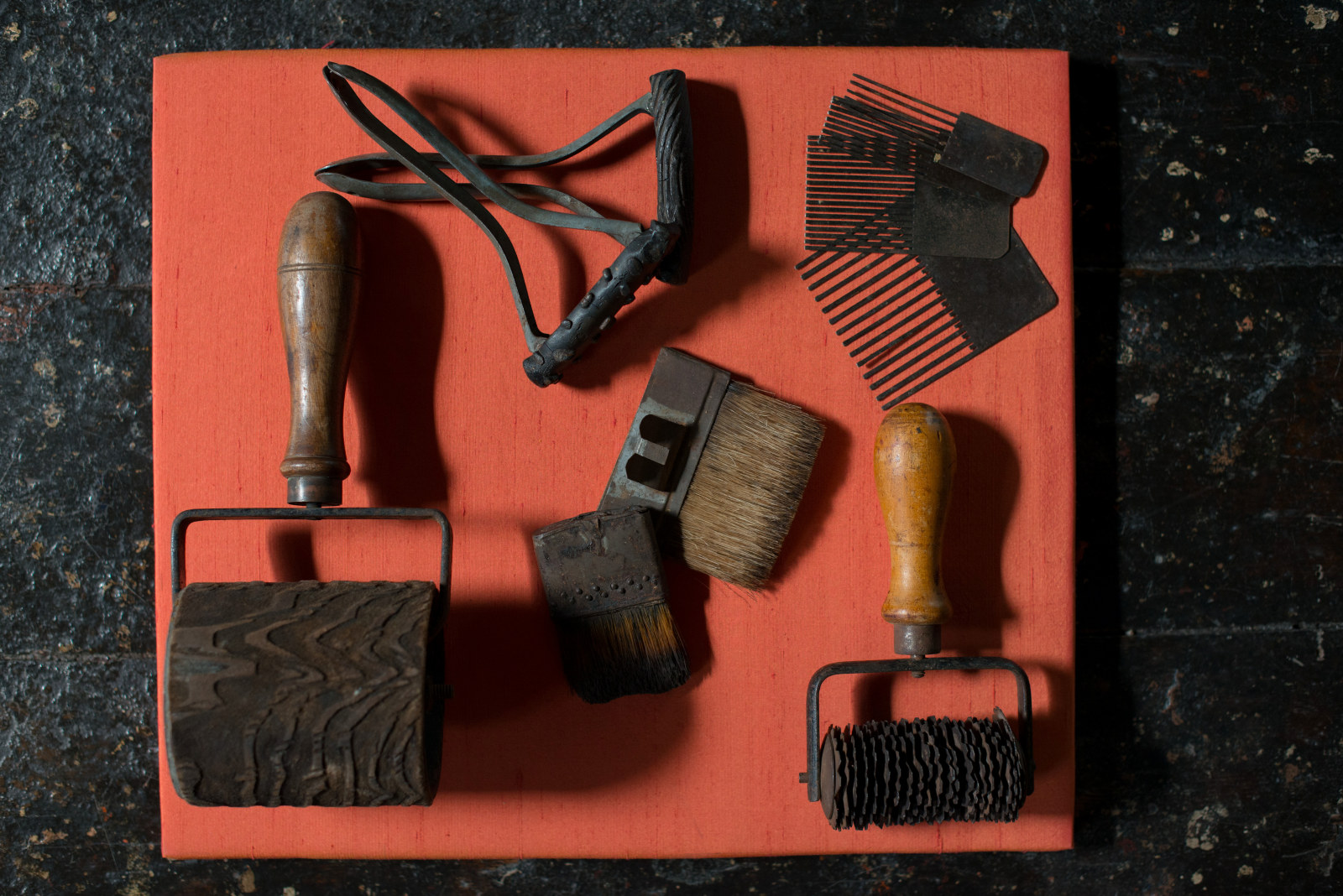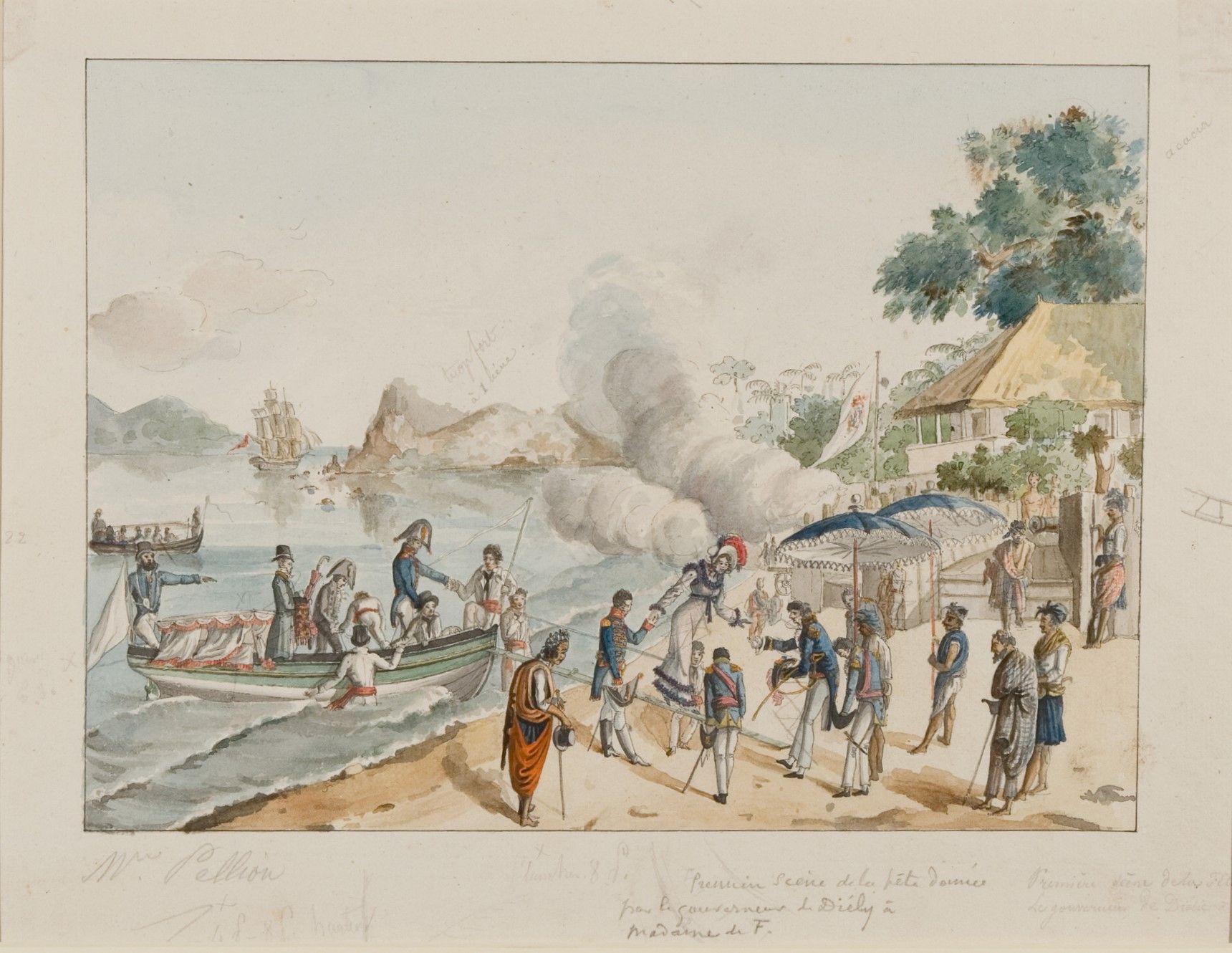From the collection: Moama mantel valance
Hand-painted on linen, this 2.3-metre-long valance once adorned the fireplace mantel in the lounge room of a large Victorian house called Cairnsville in Moama, a country town on the NSW border with Victoria.
Cairnsville was the home of draper William Marlin, his wife, Dora Jane, known as Queenie, and their family. Queenie and William moved into the house soon after their marriage in 1910, and the frieze was painted for Queenie by her artist brother John Thomas Key sometime around 1913.
The practice of draping shelves, brackets and chimneypieces with hangings called valances or lambrequins was highly fashionable in the late 19th century, continuing in popularity into the early 20th century. These decorative furnishings might be made of macramé lace or embroidered, appliquéd or painted on silk, velvet or linen, most commonly with floral motifs. Scenes of grazing cattle are rare. The Moama valance remained tacked around the mantelpiece in Cairnsville for many years, and over time the fringe frayed, eventually taking on a similarity to the switch at the end of a cow’s tail.
Discover more
Published on
Related

The Astor, 1923–2023
Upon completion in 1923, The Astor in Sydney's Macquarie Stree twas the largest reinforced concrete building in Australia, the tallest residential block, and this country’s first company title residences

City of Gods, my early experience and toy boat
Inspired by a watercolour of the ruins of the temple of Vishnu, refugee curator in residence Jagath Dheerasekara writes about Devinuvara as a site of pilgrimage, colonisation and uprising

Watch pockets
Watch pockets hung on the head cloth of a four-post bedstead and originally served in place of bedside tables, which were uncommon in the 19th century

